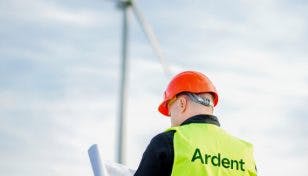Accepted for Examination: The Keadby 3 Low Carbon Gas Fired Generating Station
Share
In an effort to reduce the carbon intensity of electrically generated energy, and create sustainable energy production, the Planning Inspectorate has today accepted for examination the application for the ‘Keadby 3 Low Carbon Gas Fired Generating Station’. We are incredibly proud of our team for playing their part in supporting an application that will help in SSE’s commitment to reducing energy production emissions by 60% by 2030.
The Applicant – SSE plc’s Keadby Generation Limited, is seeking development consent for the construction, operation, and maintenance of a new low carbon Combined Cycle Gas Turbine (CCGT) Generating Station, which will be equipped with a carbon capture and storage (CCS) plant on land at, and in the vicinity of, the existing Keadby Power Station, Trentside, Keadby, Scunthorpe. The proposed development will be able to generate up to 910 megawatts (MW) gross electrical output.
CCS is a new form of technology, designed for use in renewable energy plants, which can capture at least 90% of the carbon dioxide emissions produced from the use of fossil fuels in electricity generation. This process of capturing carbon dioxide prevents the gasses from entering the atmosphere, and furthering the harmful impacts of climate change. The CCS chain consists of three separate stages; capturing the carbon dioxide, transporting the gasses, and securely storing the emissions underground, either in depleted oil and gas fields or in deep saline aquifer formations.
This project is being developed with a clear route to decarbonisation. The power facility is intended to connect to infrastructure that will be delivered by the Zero Carbon Humber (ZCH) Partnership, and Northern Endurance Partnership (NEP) for the transport and offshore geological storage of carbon dioxide.
Building on established relationships with both Aecom and DWD, and supported by our Atlas and Geospatial Insights (AGI) directorate, Ardent’s Land Referencing team were appointed by the applicant to undertake full land referencing activities (including the production of the Land Plans and Book of Reference), leading up to the DCO application.


















